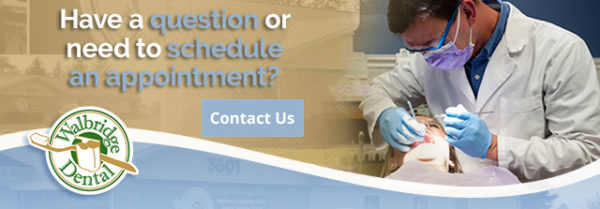
Just because you’ve been doing it for years doesn’t mean you’ve been doing it right! If nobody ever showed you how to properly brush your teeth, you may be missing key steps and techniques involved in the process. It may seem easy, but there are some parts that are easy to miss.
Read on to learn the proper way to brush teeth. If you aren’t following these steps, you may be leaving yourself vulnerable to gum disease or cavities!
The Proper Way to Brush Teeth Step-By-Step:
Step #1. Start with the Right Toothbrush
Toothbrushes are not all the same. The differences range from obvious to subtle. Choosing a toothbrush means finding one that’s best for you.
First, consider whether you want an electric toothbrush or a manual one. Here, the differences are clear – but which is actually better for you? Most dentists agree that electric toothbrushes can help keep your mouth cleaner, even if only marginally. They take some of the “technique” out of brushing, making it easier to brush correctly.
Of course, if you forget to keep it charged, or often travel, you may be better off with a manual toothbrush. They’re essentially just as capable as electric ones, but have the added benefit of being lightweight, more portable and inexpensive.
However, you also need to look for other factors in a toothbrush. Most notably, the size and types of bristles. You’ll never find a good technique for the proper way to brush your teeth if your toothbrush is uncomfortable. Choosing a size that fits your mouth and teeth well is important.
Along those same lines, toothbrush bristles differ in firmness. You may think that stiffer bristles will give you a better clean, but most dentist recommend soft bristles. Stiff bristles can be harsh on your teeth and gums – leaving you more likely to irritate your gums or cause excessive wear on your enamel.
Step #2. Find a Good Toothpaste
Toothpaste has more variety than toothbrushes, but the process of selecting one is usually a bit easier. The different types of toothpaste that will work best for getting the most out of your toothbrushing depend on your oral health and if you have any unique needs.
Standard toothpaste contains fluoride that helps prevent cavities by reducing bacteria in your mouth. Fluoride is used in all sorts of dental applications, from toothpaste to mouthwash – many cities use fluoride in the water supply to help reduce cavities in the general population as well!
Other types of toothpaste can target specific needs:
Desensitizing Toothpaste – As the name implies, desensitizing toothpaste helps reduce pain and discomfort associated with extreme temperatures, like cold or hot drinks.
Whitening Toothpaste – Toothpaste can also help whiten your teeth, albeit only slightly. Whitening toothpastes include abrasive substances that can whiten your teeth a bit. However, keep in mind that these abrasive agents can also wear on your enamel more than other toothpastes would.
Tartar Control Toothpaste – Some toothpastes advertise the ability to control tartar. Keep in mind that tartar, a hardened substance formed over a long period by bacteria, can’t be removed with simply brushing. However, tartar control toothpaste can help prevent it from forming in the first place.
If you aren’t sure which type of toothpaste is best for you, just ask your dentist! They can make a recommendation to help give you best boost to your dental health.
Step #3. The Right Way to Brush Teeth
Once you have your toothpaste and toothbrush, you’re ready to brush your teeth. As the cornerstone of your dental care routine, it’s important to make sure you know the proper way to brush your teeth.
When you have your toothbrush wet and a pea-sized amount of toothpaste on it, place it against your teeth at a 45-degree angle. This angle helps the bristles hit the entire surface of each tooth, while also brushing partially against the area where your teeth meet your gums; this area is where pockets of bacteria can form and cause serious issues, from gum disease to abscesses!
Don’t try to brush your whole mouth at once. Brush in short, back-and-forth strokes and focus on slowly but thoroughly brushing each section of your mouth. If you use an electric toothbrush, you won’t need to worry about the back-and-forth motion, the toothbrush’s rotating motion handles that for you.
After brushing across the entire outer surface, make sure to repeat these steps to brush the upper surface and the inside surface as well. If your brush’s bristles aren’t long enough to clean your teeth and gums in one pass, make sure to go back and brush your gums too. Bacteria form into colonies on your gums just as readily as they do on your teeth!
The only proper way to brush teeth is to make sure this process takes about two minutes each time. If you’re done brushing after just a few seconds to a minute, you’re likely missing areas or not brushing enough to remove bacteria. On the flip side, you don’t want to brush too long. Brushing is abrasive by nature, and too much abrasion will wear away your enamel.
Step #4. Replace Your Toothbrush as Needed
The last step to a lifetime of properly brushing your teeth is to keep in mind that no toothbrush lasts forever. In fact, depending on usage, you shouldn’t expect them to last longer than two to three months per brush.
Fortunately, modern toothbrushes have colored bristles. These bristles fade over time, and that fade is an intentional indicator that approximates the lifespan of the brush. When they lose all their color, it’s time to replace the brush.
Worn toothbrush bristles can fray and lose their firmness. When this happens, they aren’t effective for removing bacteria. You can simply toss them out.
Bonus Tips for Good Brushing & Dental Health
When To Brush
Brushing at the right time is just as important as brushing the right way. Many people brush after breakfast, but doing so can actually harm your enamel if you’ve eaten acidic foods like citrus or coffee. Acids soften tooth enamel, and brushing too soon after eating can wear it down over time.
Instead, it’s best to brush before breakfast. This removes plaque and bacteria that build up overnight and protects your teeth before you eat. If you prefer to brush after meals, wait at least 30 minutes to allow your enamel to remineralize. In the meantime, rinsing with water or chewing sugar-free gum can help wash away food particles and neutralize acids.
The Importance of Flossing Every Time
Brushing alone isn’t enough to keep your teeth and gums healthy. Your toothbrush can’t reach between your teeth or under the gumline, which is where plaque often builds up. Flossing removes food particles and bacteria from these areas, helping prevent cavities and gum disease.
For the best results, floss at least once a day, preferably before brushing at night. This ensures that any loosened debris is brushed away. If you’re new to flossing, start slow and focus on being gentle—your gums may be sensitive at first, but with regular flossing, they’ll become healthier over time.
Avoiding Common Brushing Mistakes
Even with good intentions, many people make mistakes when brushing that can impact their oral health. Here are some common habits to avoid:
- Brushing too hard – Scrubbing your teeth aggressively won’t make them cleaner. Instead, it can wear down enamel and irritate your gums. Use gentle, circular motions with a soft-bristled toothbrush.
- Rinsing immediately after brushing – Spitting out toothpaste is fine, but rinsing with water washes away the fluoride that helps protect your enamel. If you need to rinse, use a fluoride mouthwash instead.
- Not replacing your toothbrush – Worn-out bristles don’t clean effectively. Replace your toothbrush or electric brush head every three to four months or sooner if the bristles become frayed.
Do You Have Dental Health Questions? Schedule an Appointment!
We can help make sure you and your family are brushing correctly. If you’re concerned or just looking for information, the professionals at Walbridge Dental provide complete family dental care to families in the Millbury community. Contact us online to set up an appointment now or call us at 419-836-1033.
Connect on Social Media!

